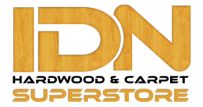Choosing the right flooring for a kitchen involves balancing aesthetics, durability, and moisture resistance. Engineered hardwood has become a popular option for homeowners who want the warmth and beauty of wood while benefiting from enhanced stability. Understanding its advantages, limitations, and proper maintenance can help determine if it is the right choice for a kitchen environment.
Benefits of Engineered Hardwood in Kitchens
Engineered hardwood offers several benefits that make it a viable flooring option for kitchens. Its layered construction provides superior stability compared to solid wood, making it less susceptible to warping or swelling due to humidity fluctuations. This is especially beneficial in a space where temperature and moisture levels can change frequently.
Aesthetic appeal is another key advantage. Engineered hardwood provides the rich, natural look of hardwood while being available in various finishes and styles. It seamlessly integrates with different design themes, from modern to traditional, creating a cohesive and inviting atmosphere.
Another benefit is its comfort underfoot. Unlike tile or stone, engineered hardwood has a slight give, making it more comfortable to stand on for extended periods. This makes it an excellent choice for those who spend a lot of time cooking or entertaining in the kitchen.
Potential Drawbacks to Consider
While engineered hardwood is more resilient to moisture than solid wood, it is not entirely waterproof. Prolonged exposure to water can cause damage, including swelling and warping. Spills should be cleaned up immediately to prevent any potential issues.
Scratches and dents are also concerns, especially in high-traffic kitchens. While the top layer of engineered hardwood is durable, heavy foot traffic, pet claws, and dropped utensils can lead to surface damage over time. Choosing a high-quality finish and incorporating protective measures, such as area rugs and felt pads under furniture, can help minimize wear and tear.
Cost is another factor to weigh. While engineered hardwood is typically more affordable than solid hardwood, it tends to be more expensive than other kitchen flooring options such as laminate or luxury vinyl. Homeowners should consider their budget when deciding whether it aligns with their renovation goals.
Best Practices for Kitchen Installation and Maintenance
Proper installation and care are essential for ensuring the longevity of engineered hardwood in a kitchen setting. Selecting a high-quality product with a durable top layer and water-resistant finish enhances its resilience. Sealing seams and edges can add extra protection against moisture infiltration.
Regular cleaning with a soft, damp cloth and a wood-safe cleaner helps maintain the floor’s appearance. Avoid using excessive water or steam mops, as these can damage the wood layers over time. Using mats near sinks and cooking areas can provide additional protection against spills and stains.
For those seeking a balance between beauty and functionality, engineered hardwood can be a stylish and practical choice for kitchens. By selecting the right finish, implementing protective measures, and maintaining proper care, homeowners can enjoy the warmth and elegance of wood flooring while ensuring long-term performance in a busy kitchen space.
Read more:
How to Choose the Right Engineered Hardwood: Wood Species, Finishes, and Core Types Explained
The Best Engineered Hardwood for Pets and Kids: Scratch-Resistant & Durable Options
